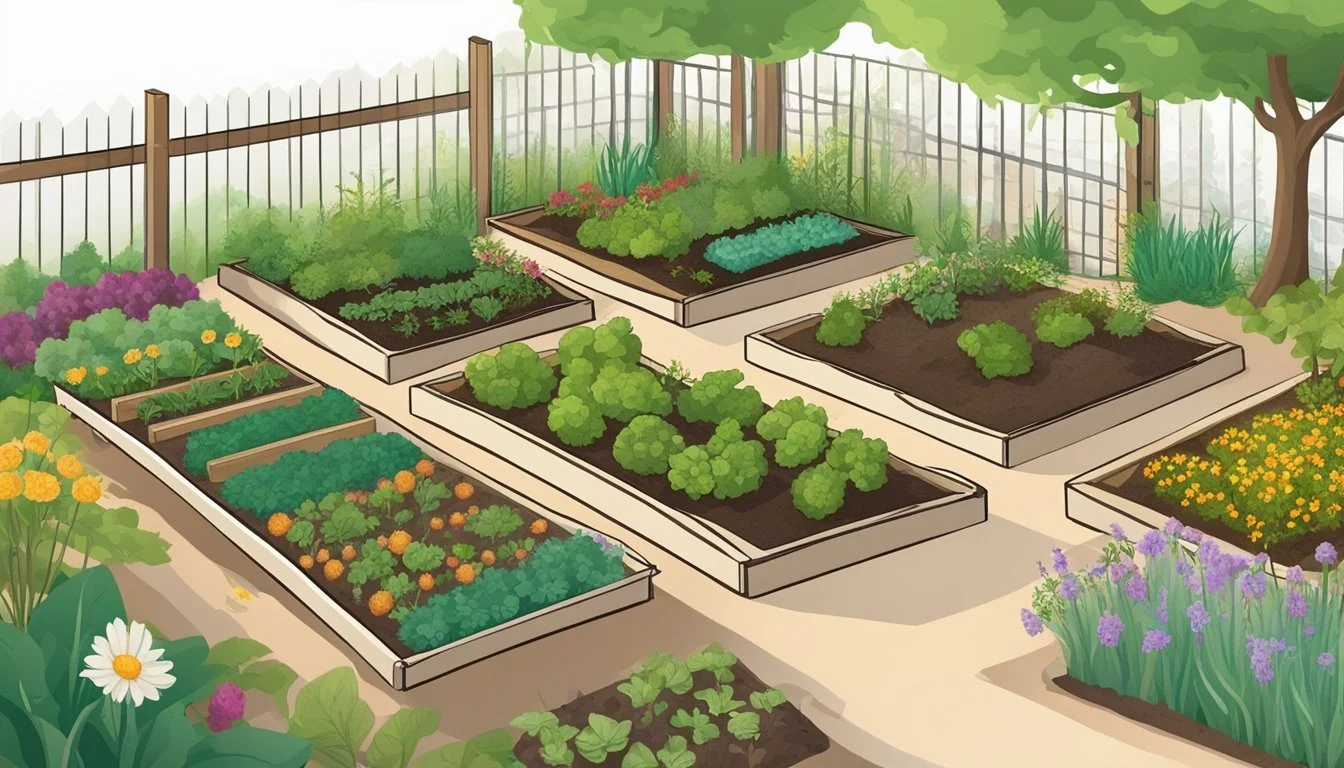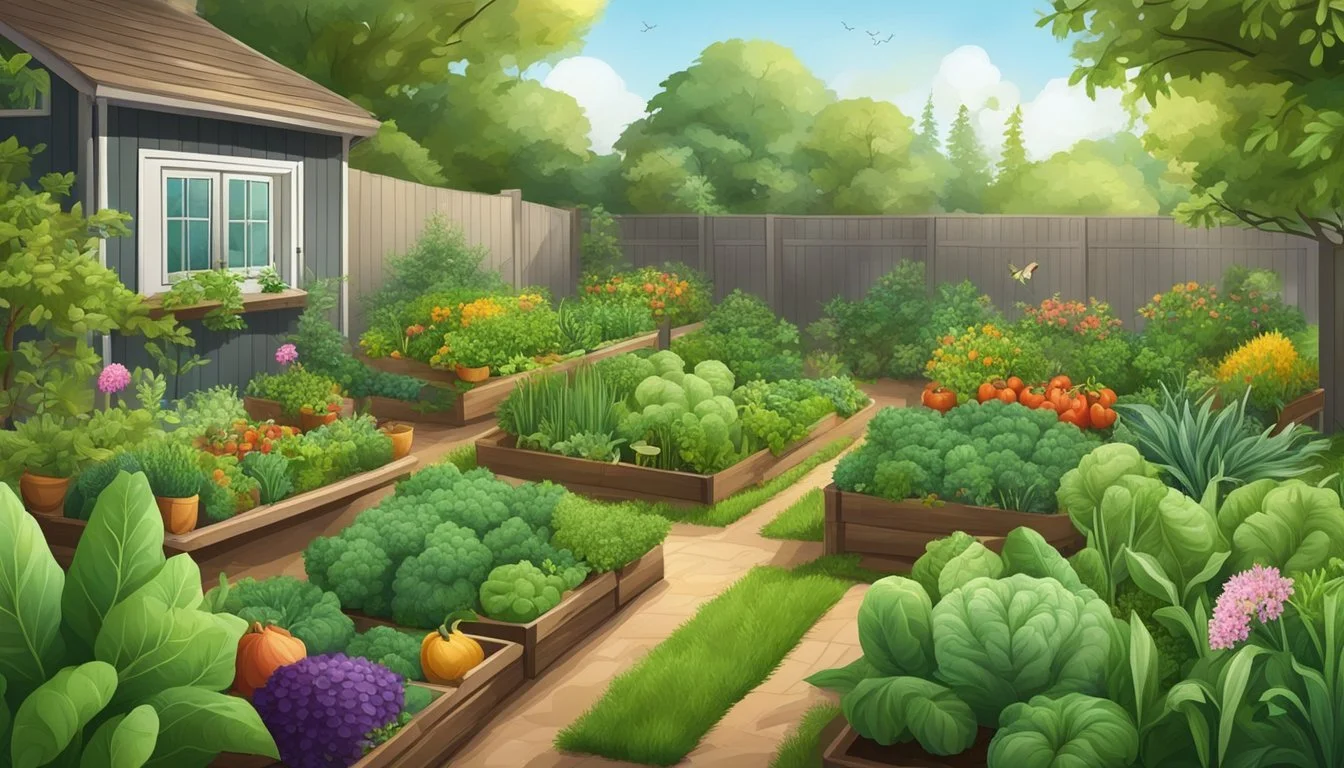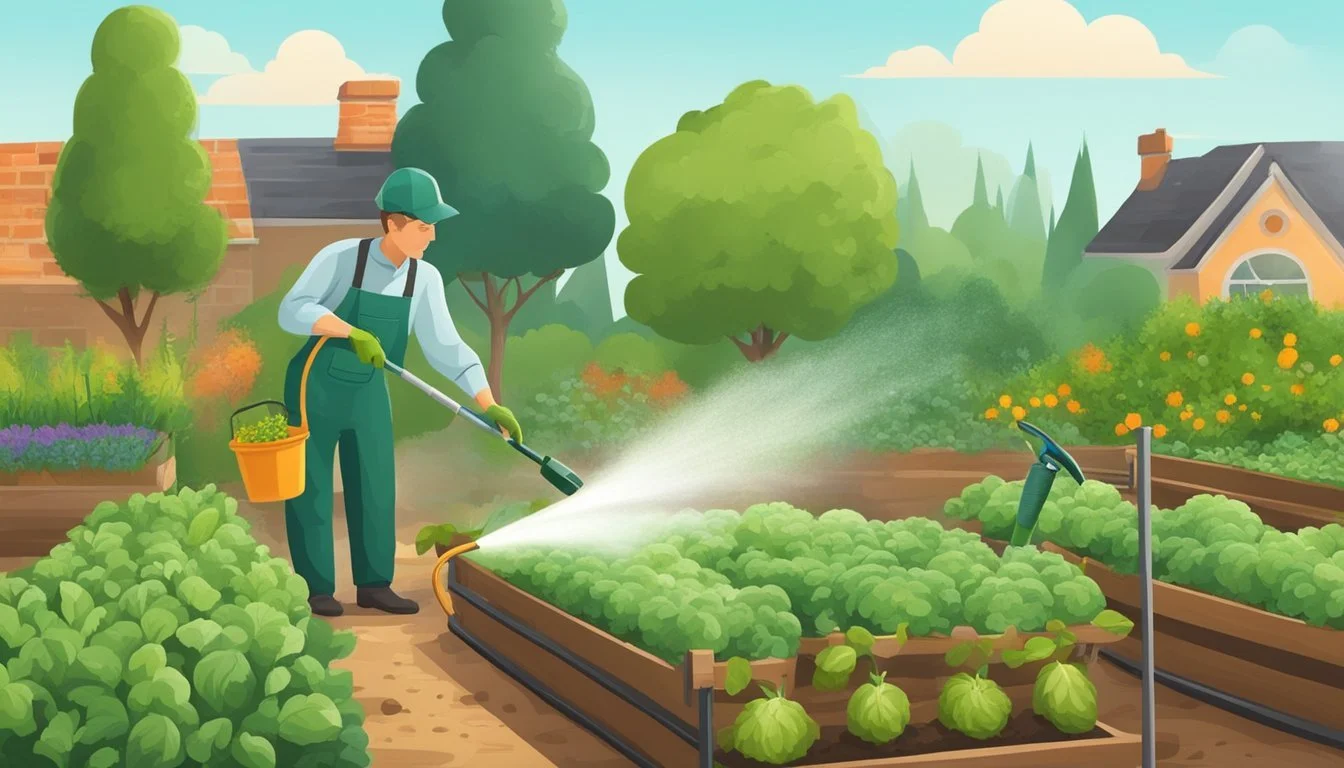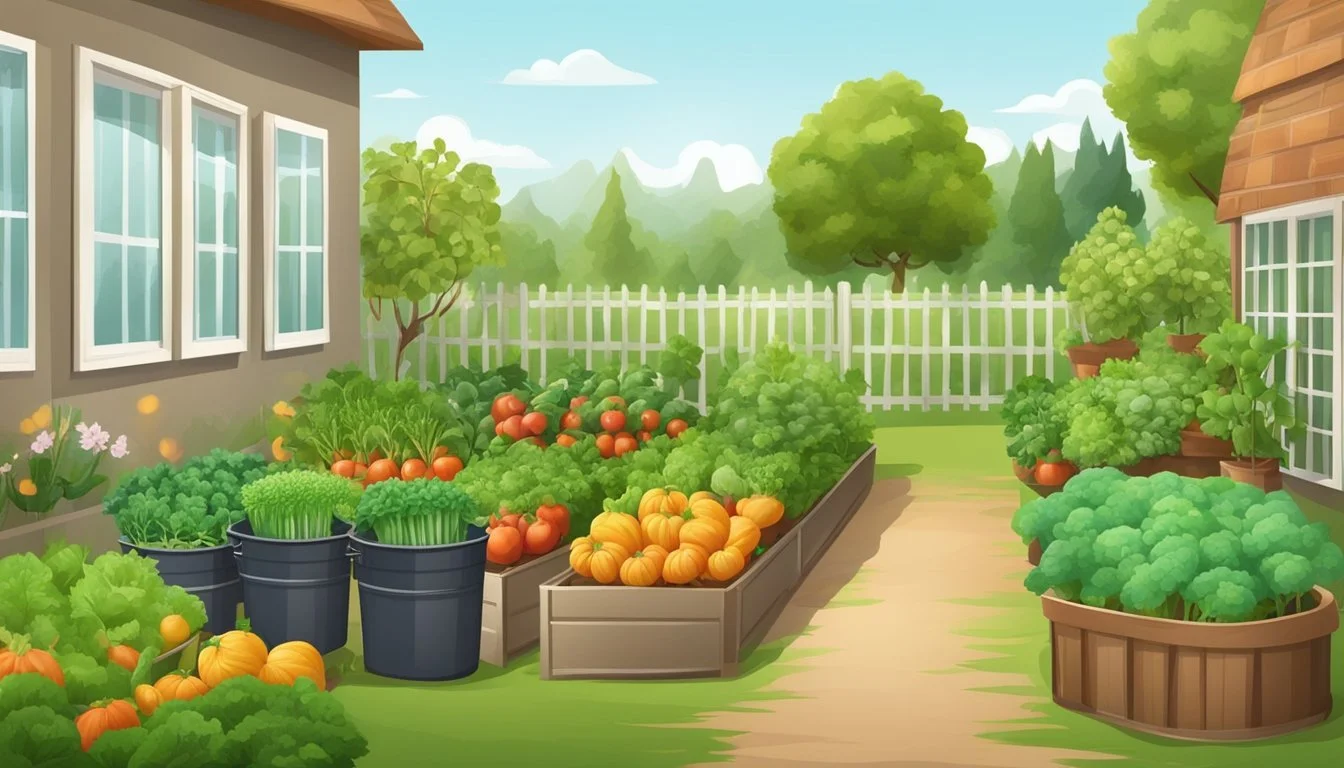Pest Control for Vegetable Gardens
Effective Strategies for Healthy Crops
Maintaining a healthy vegetable garden involves more than just planting and watering. One of the primary concerns for gardeners is pest control. Pests can significantly hinder a garden's productivity by damaging plants and reducing yields. Effective pest control is essential for the health of a vegetable garden, whether it's a small backyard plot or a larger farming operation. Gardeners must navigate the delicate balance of eradicating pests while preserving beneficial insects and maintaining an eco-friendly approach.
There is a wide array of strategies and products available for managing garden pests, ranging from organic methods to chemical insecticides. Organic options, such as [neem oil](https://Garden Safe Neem Oil Extract Concentrate.) and insecticidal soaps, target specific pests while minimizing harm to other insects and the environment. On the other hand, chemical solutions may offer more immediate results but can carry risks for the soil, non-target species, and human health. Each gardener must assess their situation and decide on the best course of action based on the specific pests they encounter and their personal gardening philosophy.
In addition to the use of products, cultural practices such as crop rotation, companion planting, and proper sanitation can also play a significant role in pest control. These methods work by disrupting the life cycle of pests or by creating a less hospitable environment for them to thrive. Regardless of the chosen methods, consistent monitoring is crucial to identify pest issues early and manage them effectively before they escalate to a damaging level.
Understanding Garden Pests
To effectively manage pests in the vegetable garden, it’s crucial to recognize which creatures are harmful and how they interact with their environment.
Types of Garden Pests
Garden pests encompass a range of organisms, including insects, worms, slugs, and beetles, that can be detrimental to plants. Some common pests like aphids, caterpillars, flea beetles, grubs, and Japanese beetles consume plant tissues, weakening or destroying crops. Colorado potato beetles and squash bugs are particularly notorious for damaging garden vegetables.
Insects: Aphids, Japanese beetles, flea beetles
Worms/Caterpillars: Tomato hornworms, cabbage loopers, tent caterpillars
Mollusks: Slugs, snails
Beetles: Colorado potato beetles, cucumber beetles
Beneficial Organisms
Not all insects and organisms in a garden are pests. Beneficial insects such as ladybugs, bees, lacewings, beneficial nematodes, praying mantis, and spiders play critical roles in pollination and natural pest control by preying on harmful insects.
Predators: Ladybugs (eat aphids), Lacewings (feed on mealybugs)
Pollinators: Bees, butterflies
Parasitoids: Wasps (lay eggs in caterpillars)
Decomposers: Beneficial nematodes (control grubs)
Effects on Ecosystem
Pests like flea beetles and cutworms, as well as diseases, disrupt the ecosystem balance, leading to reduced biodiversity. On the flip side, beneficial insects contribute to a healthy ecosystem by maintaining the populations of common pests, which in turn supports plant health and crop yield.
Negative Impact: Overpopulation of pests leads to stressed plants.
Positive Impact: Beneficial insects help keep pest populations in check.
Life Cycles and Habits
Understanding the life cycles and habits of garden pests is essential for effective control. For example, Japanese beetle grubs damage plant roots in their larval stage, while adult beetles eat leaves and flowers. Slugs are most active at night, and spider mites proliferate in dry conditions.
Colorado Potato Beetles: Complete metamorphosis from egg to adult.
Slugs: Nocturnal feeders, leaving a slimy trail.
Caterpillars (e.g., Tomato hornworms): Feed voraciously in the larval stage before becoming moths.
Organic Pest Control Strategies
Organic pest control strategies offer gardeners ways to manage pests without resorting to synthetic chemicals. These methods focus on ecological approaches and harnessing nature's balance to keep vegetables healthy and pest-free.
Cultural Practices
Cultural practices maintain healthy soil and plants. Crop rotation disrupts pest life cycles, while selecting resistant varieties of plants can minimize infestations. Mulch can prevent weeds and also create a barrier against soil-dwelling pests.
Physical and Mechanical Controls
Physical and mechanical controls include barriers like floating row covers to protect plants and handpicking to remove pests directly. Traps such as beer traps for slugs or cardboard corrals for earwigs can effectively reduce pest populations.
Biological Pest Control
Biological pest control introduces natural predators such as ladybugs, lacewings, spiders, and praying mantis. These beneficial organisms can help control pests. Microbial insecticides like Bacillus thuringiensis (Bt) target specific pests and are safe for other insects.
Organic Pesticides
Organic pesticides, when necessary, could include options like insecticidal soap, neem oil, or spinosad. It's important to choose products that are specific to the pest to minimize impact on other organisms, and to apply responsibly following all label instructions.
Home Remedies
Home remedies often use substances found in the household or garden. Homemade sprays with garlic or onions can deter pests, and diatomaceous earth can control crawling insects. Beer traps are also popular for slug control.
Companion Planting
Companion planting uses specific plants to repel pests or attract their predators. For example, marigolds deter nematodes and garlic plants can repel aphids. Planting rosemary can help protect vegetable plants from bean beetles and carrot flies.
Pest Monitoring and Identification
Regular pest monitoring and proper identification are critical for effective control. Understanding pest life cycles and recognizing early infestations can help in the timely application of the most effective organic pest control methods.
Chemical Pest Control Methods
When seeking to manage pests in vegetable gardens, gardeners often turn to chemical pest control methods. These approaches involve the application of pesticides, which are substances used to deter, incapacitate, or kill pests. Here is a closer look at two types of chemical pesticides: selective and broad-spectrum.
Selective Pesticides
Selective pesticides are specifically formulated to target a particular type of pest or group of pests, thereby minimizing harm to non-target species such as beneficial insects like the praying mantis. For instance, Bacillus thuringiensis (Bt) is a microbial insecticide that affects only certain larvae when they consume it. Spinosad is another type of selective pesticide derived from naturally occurring bacteria, which is effective against a wide range of insects including caterpillars and leafminers, but has minimal effects on non-target species.
Broad-Spectrum Pesticides
In contrast, broad-spectrum pesticides have a wide range of action, affecting multiple species of pests. These pesticides are powerful tools in pest management but require cautious use to avoid impacting beneficial organisms and the environment. Examples include insecticidal soaps, which disrupt the cell membranes of insects upon contact, leading to dehydration and death. Horticultural oils work by smothering pests and are effective against a multitude of insects in their juvenile stages. Both insecticidal soaps and horticultural oils can be considered chemical pesticides, though they may have lower toxicity profiles than other synthetic options.
Safety Considerations in Pest Control
When managing pests in vegetable gardens, safety is paramount for not only the gardener but also the surrounding environment. Utilizing pesticides demands caution to protect beneficial insects, pets, birds, bees, and other non-target species, while ensuring safe and effective application that mitigates risk to humans.
Protecting Non-Target Species
Beneficial insects, such as ladybugs and lacewings, play a vital role in naturally controlling pest populations. To safeguard these allies, gardeners should select pesticides that are specific to the harmful pests they aim to control. For instance, using pheromone traps can target specific pest species without impacting beneficial populations. Moreover, timing applications to avoid blooming periods helps protect pollinators like bees. It is also essential to be mindful of pets and birds that may visit the garden, by carefully reading labels and opting for non-toxic options when available.
Proper Application Techniques
Pesticides, including sprays and powders, must always be applied according to the manufacturer’s instructions to minimize risk and ensure effectiveness. This includes:
Applying under calm weather conditions to prevent drift.
Using the correct dosage and not exceeding the recommended amount.
Avoiding application near water sources to prevent contamination.
Following these guidelines helps prevent unintended spread of chemicals, which can pose risks to nearby ecosystems and non-target organisms.
Personal Protective Equipment
Gardeners handling chemical pesticides should wear appropriate personal protective equipment (PPE) for their safety. PPE may include:
Gloves: To protect skin from direct contact with pesticides.
Goggles: To shield eyes during mixing and application.
Long-sleeved clothing: To minimize skin exposure.
Respirators: When recommended, especially for more toxic or volatile substances.
Always wash hands and exposed skin thoroughly after pesticide application and change into clean clothes to reduce the risk of residue transfer.
Integrating Pest Management Strategies
Incorporating integrated pest management (IPM) techniques into a vegetable garden is vital for reducing pest damage while minimizing environmental impact. These strategies encompass preventative measures, timely intervention, and regular garden maintenance to achieve effective pest control.
Preventative Measures
Preventive steps are crucial for managing garden pests. Utilize mulch to retain soil moisture and suppress weed growth, which can host pests. Companion planting can discourage pests naturally; for example, planting marigolds near tomatoes can repel nematodes. Crop rotation prevents pest populations from building up by changing the types of plants grown in an area each season. Lastly, barriers, such as row covers, offer physical protection against insects and wildlife.
Timely Intervention
Should pests breach preventive defenses, gardeners need to act swiftly. Traps can be set to monitor and reduce pest populations. Handpicking is a direct and immediate method to remove visible pests like caterpillars and beetles. Chemical interventions like insecticidal soap and neem oil should be used judiciously. These treatments target pests without causing undue harm to beneficial insects when applied correctly.
Regular Garden Maintenance
Ongoing garden maintenance is the backbone of IPM. Regular inspection of plants allows early detection of pest presence. Mulch application should be replenished as needed to continue its protective role. Pruning of infected or infested foliage can prevent the spread of pests. Routine cleaning of the garden area also reduces habitats for pests to thrive. This systematic care supports plant health and reduces the likelihood of significant pest invasions.
Planning and Designing a Pest-Resilient Garden
A pest-resilient vegetable garden starts with strategic planning that integrates methods like companion planting and physical barriers, and emphasizes the use of resistant plant varieties and smart timing for planting and harvest.
Garden Layout for Pest Control
Companion planting can be a powerful tool in managing pests. Designing the garden so that compatible plants are near each other can deter pests naturally. For instance, marigolds release a natural chemical that repels pesky nematodes, and thus should be interspersed among vegetables. Incorporating physical barriers, such as floating row covers or fencing, into the garden layout can physically block pests from reaching the plants. Raised beds can also help in preventing soil-dwelling pests from accessing crops.
Choosing Resistant Varieties
Selecting resistant varieties of plants is critical for minimizing pest issues. For example, certain tomato varieties have been bred to resist common pests like the tomato hornworm. The choice of these varieties can significantly reduce the need for chemical interventions. Gardeners should research and procure seeds or seedlings that are known to have a natural resistance to prevalent garden pests in their region.
Timing of Planting and Harvest
Timing plays a crucial role in avoiding peak pest populations. By timing the planting, one can either avoid the life cycle of pests or exploit beneficial insects that prey on pests. For instance, planting early to avoid aphid infestations can be quite effective. Crop rotation is another fundamental aspect; it prevents pests from becoming established by changing the types of crops grown in a particular area from year to year. Managing the harvest schedule to remove crops before pests can overwinter also minimizes future infestations.
Post-Pest Control Garden Care
After implementing pest control measures in a vegetable garden, it is crucial to evaluate the effectiveness, address soil health, and welcome beneficial insects back into the ecosystem for continued plant vigor and productivity.
Assessing Pest Control Efficacy
Gardeners should closely monitor their plants following pest control efforts. One should look for signs of persistent or new pest activity, including bite marks on leaves or wilted stems. If traps were used, they should check and clear these regularly to measure which pests are still active within the garden environment.
Soil Care and Recovery
Post-pest control in a garden demands soil assessment and recovery to ensure future plantings thrive. Gardeners can incorporate organic mulch to protect soil structure and moisture, and perform crop rotation to prevent pest populations from becoming established. It is also beneficial to test the soil and amend it with necessary nutrients, which may have been disrupted due to pest control actions.
Reintroduction of Beneficials
Once pest control has been implemented and the threat diminished, reintroducing beneficial insects such as ladybugs and lacewings can help maintain a balanced garden ecosystem. These predators naturally control pest populations and contribute to the pollination process. Plants that attract these helpful insects can be integrated to ensure long-term garden care and productivity.
Advancements in Pest Control
The landscape of pest control in vegetable gardens is continually shifting, with significant progress rooted in the scientific development of innovative biological methods. These strategies offer gardeners eco-friendly alternatives to traditional chemical pesticides.
Innovative Biological Controls
They have seen remarkable advancements in biological control methods. These methods employ living organisms to combat pests, turning the natural enemies of pests into powerful allies for gardeners. A notable innovation is the use of Bacillus thuringiensis (Bt), a soil-dwelling bacterium. When applied to vegetable gardens, it produces proteins that are toxic to certain insects, effectively managing pest populations without harming beneficial insects or the environment.
Another leap forward has been the introduction of beneficial nematodes. These microscopic worms attack and kill a variety of garden pests, including grubs and larvae, from within. Their application is straightforward and safe for plants, beneficial insects, and humans, making beneficial nematodes an essential tool in the modern gardener's pest control arsenal.
Legal and Environmental Aspects of Pest Control
In the realm of pest control within vegetable gardens, adherence to legal frameworks and consideration of environmental effects are crucial. The application of pesticides is governed by stringent regulations, and the potential impact on the environment necessitates thorough, scientific scrutiny.
Regulations on Pesticide Use
Laws pertaining to pesticide use are designed to ensure public safety and environmental protection. In the United States, for example, the Environmental Protection Agency (EPA) regulates pesticides under the Federal Insecticide, Fungicide, and Rodenticide Act (FIFRA). This requires that:
All pesticides are registered and evaluated.
Labels provide clear instructions for effective and safe use.
Users comply with all label directions.
Internationally, countries are guided by their own regulatory bodies and may also adhere to standards set by international agreements, such as the Stockholm Convention, aiming to protect human health and the environment from persistent organic pollutants (POPs).
Environmental Impact Studies
Before a pesticide can be approved for use, comprehensive environmental impact studies are required. These studies address:
The direct effects of pesticides on the targeted pests.
The potential for harm to non-target species, including beneficial insects, wildlife, and humans.
The persistence of pesticides in soil and water and their potential for bioaccumulation.
Regulatory agencies review these studies to determine whether the benefits of a pesticide's use outweigh the potential risks. They are also responsible for monitoring compliance with environmental laws and investigating reports of environmental damage or non-compliance with regulations.
Resources for Gardeners
Gardeners have a wealth of resources at their disposal to manage pests effectively and maintain the health of their vegetable gardens. From tailored guidance provided by extension services to the shared experiences of online communities and the in-depth knowledge available in books and publications, a gardener can find assistance for nearly any issue.
Extension Services and Guides
Extension services offer vital, science-based knowledge to gardeners. These resources often include guide sheets and local workshops, providing practical solutions and identifying pests prevalent in specific regions. For example, the Guide to Vegetable Garden Pests: Identification and Organic Controls is an excellent resource for organic pest control strategies.
Online Forums and Communities
Online forums and communities represent a modern nexus of support for gardeners. These platforms enable the exchange of advice, success stories, and effective pest control techniques. Places like Garden.org foster discussions on integrated pest management and other gardening practices that emphasize diversity and prevention.
Books and Publications
Books and publications are invaluable for gardeners seeking to deepen their understanding of pest control. They provide comprehensive information on a wide array of topics, from organic methods to chemical treatments. Publications like those found on Mother Earth News, offer insights into what works and what doesn't based on extensive gardener surveys.
Conclusion
Effective pest control in vegetable gardens is a multifaceted process. Gardeners should adopt a variety of strategies to ensure a healthy and productive harvest. One can begin by selecting pest-resistant plant varieties and preparing the soil adequately to discourage pest invasions.
A comprehensive approach includes the utilization of physical barriers such as nets or row covers to protect plants. Encouraging a diversity of plants creates habitats for beneficial insects that can act as natural predators to pests. It is essential to maintain a balance where the garden ecosystem can self-regulate and keep pest populations in check.
Implementing organic pesticides carefully is advisable when other methods do not suffice. These pesticides, such as neem oil, should be used as a last resort and applied according to guidelines to minimize harm to non-target species.
Gardeners must remain vigilant, consistently monitoring their garden for pest activity and adapting their control measures accordingly. Through patience and persistence, gardeners can overcome pest challenges.
Maintaining a garden’s health is a continuous process, requiring attention to detail and a willingness to adjust tactics when necessary. It is through this attentive care that one can enjoy the rewards of a flourishing vegetable garden.
Glossary of Terms
Biological Control: A method of controlling pests using other living organisms. It relies on predation, parasitism, herbivory, or other natural mechanisms.
Companion Planting: The practice of growing different plants together for mutual benefit, often to deter pests.
Diatomaceous Earth: A powdery substance made from the fossilized remains of diatoms used to deter insects by dehydrating them.
Integrated Pest Management (IPM): An ecosystem-based strategy that focuses on long-term prevention of pests through a combination of techniques.
Neem Oil: Extracted from the neem tree, it acts as a natural insecticide. It's useful for controlling various pests without harming beneficial insects.
Pesticide Resistance: The adaptation of pests to withstand chemicals designed to kill them, leading to the necessity for increased dosages or stronger chemicals.
Phytochemicals: Naturally occurring compounds in plants which may have defensive properties against pests.
Trap Crop: A plant used to attract pests away from the main crop to reduce damage.
Beneficial Insects: Insects that are helpful for pest control, such as ladybugs, which feed on aphids.
_Cultural Control: Changing farming practices to reduce pest establishment, reproduction, dispersal, and survival.
List of Botanical Terms:
Herbivory: The act of animals eating plants, which can sometimes act as a natural pest deterrent.
Monoculture: The agricultural practice of growing a single crop over a wide area for a consecutive number of years.
Polyculture: Growing multiple crops in the same space, which can reduce the spread of pests.
Key Pest Control Terminology:
Insecticide: A chemical used to kill insects.
Fungicide: A chemical used to kill fungi or fungal spores.
Rodenticide: A chemical used to kill rodents.
Virulent: The degree of pathogenicity within an organism, informing its capacity to cause damage to a host.
References
When managing pests in vegetable gardens, gardeners often turn to various authoritative sources for guidance on best practices. Notable among these sources are research studies and publications that offer evidence-based information.
One authoritative source on the topic is the National Gardening Association, which offers insights into choosing pest-resistant plant varieties, the importance of good soil preparation, and maintaining biodiversity in garden spaces for effective pest control.
For those seeking organic pest control methods, the Organic Pest Control for the Vegetable Garden course can be a valuable resource. They provide guidance on identification and management of the most common garden pests using organic practices.
Research citations relevant to the use of insecticides in vegetable gardens include studies on the effectiveness and safety of different products. Information on the highly recommended options such as Bonide Pyrethrin Garden Insect Spray can be found on the Bob Vila website.
Lastly, for gardeners interested in using botanical insecticides, there are detailed resources discussing the benefits and application methods of products like neem oil and insecticidal soap. A comprehensive list of organic pest control options can be found at Smart Garden Home, highlighting both the efficacy and environmental considerations of these methods.
Frequently Asked Questions
This section addresses common concerns about managing pests in vegetable gardens, covering both homemade and commercial solutions, as well as natural and organic methods.
What are the most effective homemade pest control solutions for vegetable gardens?
Homemade pest control solutions often involve natural ingredients. For example, a spray made of water and neem oil can act as an effective deterrent against a variety of garden pests.
Which commercial pest control products are safe and effective for vegetable gardens?
There are commercial products specifically designed for vegetable gardens that are both safe and effective. Bacillus thuringiensis is a bacterial product used against caterpillars without harming beneficial insects.
How can I naturally deter pests in my vegetable garden using plants?
Certain plants can naturally deter pests. For example, marigolds produce a scent that deters nematodes and other pests from attacking nearby vegetables.
What is the safest way to eliminate soil pests in a vegetable garden?
The safest way to manage soil pests includes encouraging beneficial insects, such as ground beetles that prey on harmful larvae, and applying natural soil amendments to promote healthy plant growth.
Which organic methods are recommended for controlling pests in garden vegetables?
Organic methods for pest control include introducing beneficial predators, such as ladybugs to control aphids, and using insecticidal soaps or oils that are non-toxic to humans and wildlife.
What are the best practices for applying insecticide to a vegetable garden without harming the plants?
The best practices for applying insecticide to a vegetable garden include targeted applications to affected areas and avoiding broad-spectrum insecticides that can harm beneficial insects. It's important to follow the product instructions carefully and apply during cooler periods of the day to minimize plant stress.









